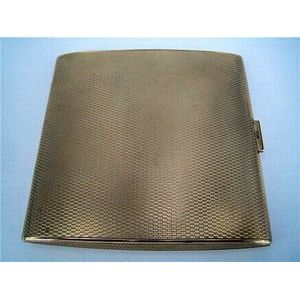Victorian Mahogany Extension Table with Reeded Legs
You must be a subscriber, and be logged in to view price and dealer details.
Subscribe Now to view actual auction price for this item
When you subscribe, you have the option of setting the currency in which to display prices to $Au, $US, $NZ or Stg.
- Mahogany - Mahogany is a dense, close grained red-coloured timber from the West Indies and Central America. It was first imported into Europe in the the early 18th century and its use continued through the 19th century. It was popular for furniture making because of its strength, the wide boards available, the distinctive grain on some boards, termed flame mahogany and the rich warm colour of the timber when it was polished.. The "flame" was produced where a limb grew out from the trunk of the tree, and this timber was usually sliced into veneers for feature panels on doors, backs and cornices.
Some terms used to describe mahogany relate to the country from which it originally came, such as "Cuban" mahogany, "Honduras" mahogany etc. However unless the wood has been tested the names assigned are more a selling feature, rather than a true indication of the timber's origin. - Victorian Period - The Victorian period of furniture and decorative arts design covers the reign of Queen Victoria from 1837 to 1901. There was not one dominant style of furniture in the Victorian period. Designers used and modified many historical styles such as Gothic, Tudor, Elizabethan, English Rococo, Neoclassical and others, although use of some styles, such as English Rococo and Gothic tended to dominate the furniture manufacture of the period.
The Victorian period was preceded by the Regency and William IV periods, and followed by the Edwardian period, named for Edward VII (1841 ? 1910) who was King of the United Kingdom and the British Dominions and Emperor of India for the brief period from 1901 until his death in 1910. - Reeding - A series of parallel, raised convex mouldings or bands, in section resembling a series of the letter 'm'. The opposite form of fluting, with which it is sometimes combined. Reeding is commonly found on chair legs, either turned or straight, on the arms and backs of chairs and couches and around table edges in the Neoclassical or Classical Revival manner. Reeding was also used as a form of decoration during the Edwardian period, but it is usually much shallower and evidently machine made.
This item has been included into following indexes:
- tables, large dining
Visually similar items

A 9ct gold cigarette case, engine-turned, facsimile engraved initials and date; Hardy Bros. Wt (all in) 99.4g

A Royal Doulton 'Mr Pickwick' character jug, 1993, D 6959, the Royal Doulton limited edition character jug of the classic Dickens character, number 137 of an edition of 2500; with backstamps underside. Height 18.5 cm

Vico Magistretti (Italian, 1920-2006), pair of mezza chimera lamps, c. 1969 manufactured by Artemide, Italy, one-piece molded plastic form on a white enamelled metal base, signed with moulded manufacturer's mark to underside 'Artemide, Made in Italy, Model

A white jade snuff bottle, Qing Dynasty, 18-19th century, a natural pebble carved with a pair of chilong dragons in low relief, the reverse exhibiting a pale celadon-russet skin, coral and silver stopper, 10 cm high
